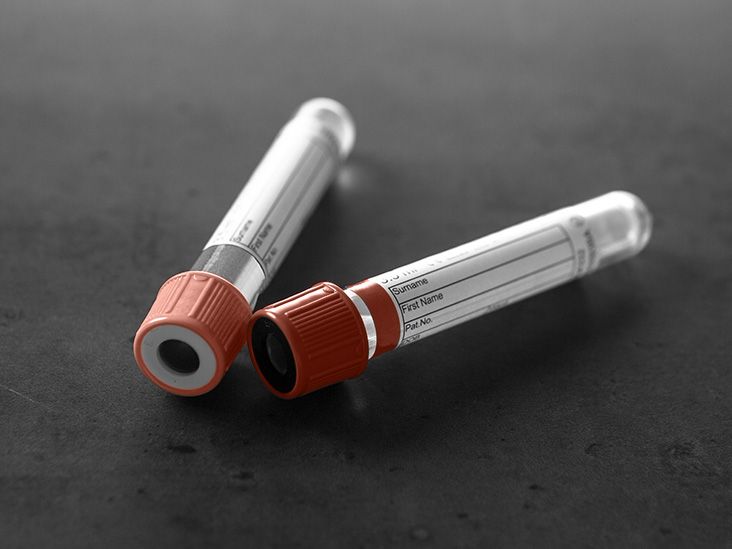Blood
Hemophilia A vs. B: What to know

Hemophilia A and B are similar conditions that affect the blood’s ability to clot. They typically occur due to gene variations that affect different blood clotting factors.
Hemophilia is a group of conditions that impact the blood’s ability to coagulate, or clot. When the blood does not clot properly, a person is at a higher risk for spontaneous bleeding or severe bleeding following an injury.
Hemophilia occurs when an individual has low levels of certain proteins in the blood, known as clotting factors. There are many different clotting factors, and they play an important role in the formation of blood clots.
Hemophilia A and B are two of the most common types of hemophilia. Different types of hemophilia correspond to various clotting factors. Hemophilia A and B occur due to factor VIII and IX deficiencies, respectively.
Hemophilia A and hemophilia B are the two main types of hemophilia. Both conditions have similarities but are distinguishable by the genetic variation that causes the blood clotting problem.
Both hemophilia A and B are typically X-linked conditions. This is because the X chromosomes contain the genetic alterations that can lead to both types of hemophilia. Hemophilia is more common in males. However, while it is much rarer, hemophilia can also affect females.
People living with hemophilia A have a genetic variation in the F8 gene, which is responsible for producing blood clotting factor VIII. Meanwhile, those with hemophilia B have a genetic alteration in the F9 gene, which results in the underproduction of blood clotting factor IX.
Learn more about the genetic inheritance of hemophilia.
Hemophilia A and B tend to occur due to a person inheriting a genetic variation that leads to an underproduction of certain blood clotting factors.
For hemophilia A, a genetic alteration in the F8 gene causes an underproduction of clotting factor VIII. However, for hemophilia B, a genetic variation in the F9 gene results in low levels of clotting factor IX. These gene alterations result in a deficiency, or impaired function, in the corresponding clotting factor.
However, in rare cases, a person may develop acquired hemophilia. This is when hemophilia develops in individuals without a personal or family history of blood clotting problems. It can occur if the body produces antibodies that mistakenly attack blood clotting factors.
As hemophilia is a genetic condition, it typically runs in families. Additionally, as it is an X-linked condition, it presents more commonly in males but can also affect females.
Learn more about lab tests to diagnose hemophilia.
The symptoms of hemophilia A and B are similar. Common symptoms may include:
- excessive bleeding after injuries, dental procedures, or surgery
- frequent nosebleeds
- bleeding into joints, which can cause pain and swelling in the joints
- bleeding into skin or muscle that causes bruising or hematomas
- blood in the urine or stool
Is hemophilia A or B more severe?
There is little research comparing the severity of hemophilia A and B. A 2019 review notes that people with hemophilia B are less likely to experience severe symptoms. However, there is unlikely to be a significant difference between the two.
Instead, it is more important to consider the severity of the condition itself. For hemophilia, this refers to the amount of clotting factor a person has in their blood. People in the general population will have 50–150% clotting factors in their blood. This amount is lower in those with hemophilia and ranges from:
- Mild: 6–40%
- Moderate: 1–5%
- Severe: less than 1%
Learn more about hemophilia.
The treatment options for both conditions are similar and involve replacing the deficient blood clotting factor. As such, treatment for hemophilia A usually involves replacement therapy for factor VIII, and treatment for hemophilia B involves replacing factor IX.
A doctor may also prescribe non-factor replacement therapies to help prevent bleeding or assist in better clotting. These medications may include desmopressin and aminocaproic acid.
There are also gene therapy options available for both hemophilia A and B. These are Roctavian and Hemgenix. Both treatments use a modified virus containing the gene for the deficient blood clotting factor. After a single dose, the virus carries the gene for the missing blood clotting factor into liver cells, which allows the liver to produce either factor VIII or IX.
Learn more about coagulation and blood clotting in hemophilia.
The outlook for both hemophilia A and B varies and depends on the severity of the condition. As treatment options and accessibility to treatment continue to improve, the life expectancy for someone with hemophilia increases.
A 2021 study in the Netherlands suggests that the average life expectancy of males in the Netherlands with either hemophilia A or B is roughly 6 years less than the general Dutch male population.
Hemophilia is a group of conditions that interfere with the blood’s ability to clot properly. Hemophilia A and B are two of the most common types of hemophilia.
The symptoms of both conditions are similar, but they occur due to deficiencies in different blood clotting factors. Both occur most often due to genetic reasons.
Hemophilia A usually occurs due to an alteration in the F8 gene, causing an underproduction of factor VIII. Hemophilia B typically develops due to a variation in the F9 gene, causing low levels of factor IX.
Treatment for both conditions often involves replacing the deficient blood clotting factor. The outlook for both conditions varies depending on the severity. However, with proper treatment, many people with hemophilia live full lives.
